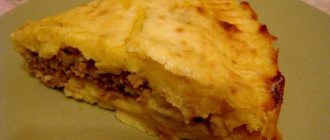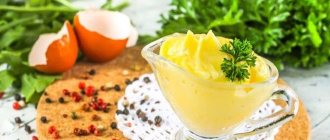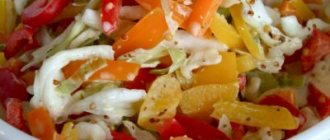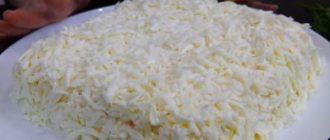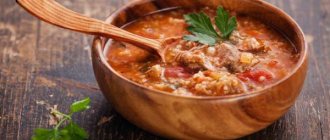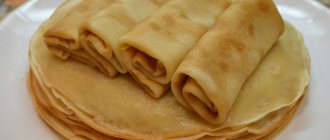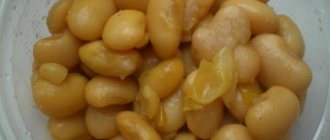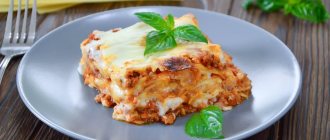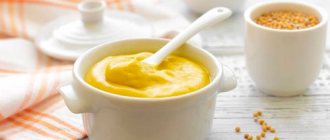Rarely are any products surrounded by so many scary stories about their harm and danger as mayonnaise. They love it and hate it, they argue about its use and, of course, about its preparation. In fact, most problems, such as questionable composition and prohibitive calorie content, can be solved if you do everything yourself. So we have selected 6 of the most delicious homemade mayonnaise recipes for you!
Homemade mayonnaise with mustard
The taste is richer and piquant - an eternal classic!
You will need:
4 eggs, 500 ml oil, 2 tbsp.
lemon juice, 4 tsp. mustard, 1 tsp. sugar and salt. Preparation:
Beat the eggs with a blender with the remaining ingredients, except oil and lemon, in a high container. Continuously whisking, add butter along the side until the sauce thickens. At the end, add lemon juice and finally beat the mayonnaise again.
How to make homemade mayonnaise
Now many housewives have adapted to making mayonnaise at home. This is understandable, because the composition of store-bought sauce can hardly be considered healthy. And when preparing at home, we are sure that it contains only healthy and high-quality products. In this article, I have already described recipes for cooking using a blender and mixer. But what to do if, for example, your blender breaks down? Or you are at the dacha and, having decided to make a salad, you don’t have any dressing with you. It turns out that it can be made just as tasty using a regular whisk, as in this video.
In conclusion, I’ll add a few secrets, without which your mayonnaise may not turn out tasty and thick.
- It is very important to follow the technology of its preparation. If you are preparing the sauce for the first time, then prepare it strictly according to the recipe. The sequence of ingredients is very important.
- All ingredients (butter, eggs, milk, etc.) must be at the same temperature.
- If while whipping you see that the consistency is too thick and you are not happy with it, add 1-3 teaspoons of water to it and beat the mixture some more.
- To dilute the mass, when it turns out to be very thick, you can add sour cream instead of water; this will not affect the taste in any way. On the contrary, a creamy taste will appear.
- If the sauce turns out thin, add a little lemon juice, but do not overdo it, otherwise it will turn out sour. You can cool the whipped ingredients a little. If these methods do not help, you can use starch and cook something like jelly based on mayonnaise.
- The unsuccessful product can be used for baking various products: meat, fish, in casseroles.
Dear readers, if you prepare mayonnaise at home, write in the comments how you prepare it and whether you have your own cooking secrets. I will be very grateful.
Bon appetit!
Homemade mayonnaise with milk
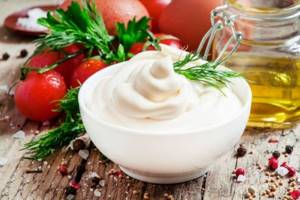
If you think that it is impossible to make homemade mayonnaise without eggs, you are mistaken!
You will need:
300 ml milk, 600 ml butter, 2 tbsp.
lemon juice, 3 tbsp. mustard, 1 tsp. salt and sugar. Preparation:
Warm the milk to room temperature, add the butter and beat with a blender until it thickens well. Add the remaining ingredients from the recipe and beat for another half a minute at the highest power.
Mayonnaise "Provencal" in seconds
I suggest you see clearly in the video how to make a delicious homemade sauce. And you will see for yourself that preparing it is very easy and simple; even a beginner will not have much difficulty preparing such a dressing at home.
Today you learned and learned how to prepare mayonnaise at home. Even if you don’t eat it often, it will be useful for preparing salads, casseroles and hot dishes. Therefore, it is better to use a homemade and natural product than to buy one from a store with harmful additives. This sauce goes well with fried zucchini, meat dishes, salads, and also acts as an independent sauce or marinade.
The sauce may not work out the first time, but if you take into account all the nuances, it should turn out without problems. Use only fresh and proven products. It’s also worth knowing that the sauce can be stored in the refrigerator for no more than 3 days, so you shouldn’t prepare a large quantity. It’s better to make it in small portions, but fresh.
Homemade mayonnaise with vinegar
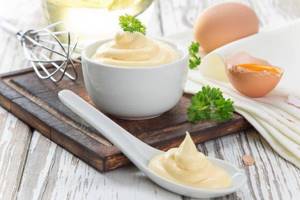
The expressive and spicy taste of mayonnaise can be obtained even without mustard when it is not on hand.
You will need:
4 eggs, 300 ml oil, 1 tsp.
9% vinegar, salt and sugar. Preparation:
Separate the yolks from the eggs because you won't need the whites. Add salt, sugar and vinegar, beat, add oil and beat for another 5 minutes. If you prefer light and delicate mayonnaise, then use apple cider vinegar.
Homemade mayonnaise with quail eggs
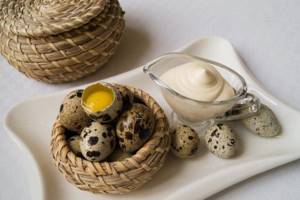
The recipe for this homemade mayonnaise will suit true gourmets and fans of proper nutrition!
You will need:
10 quail eggs, 250 ml of oil, 1.5 tbsp.
lemon juice, 1 tsp. mustard, salt and sugar. Preparation:
Beat eggs with mustard, sugar, salt and spices to taste in a blender until smooth. Add the oil little by little and immediately continue whisking until the mixture thickens. Lastly, add lemon juice and beat again.
Homemade mayonnaise with water
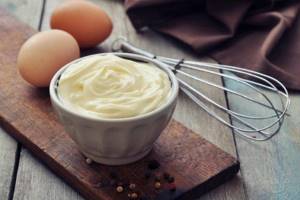
This unusual recipe is worth trying for those who prefer a neutral taste of the sauce!
You will need:
1.5 cups of water, 0.5 cups of flour, 4 tbsp.
oil, 2 tbsp. mustard, 1 tbsp. lemon juice, 1.5 tsp. sugar and salt. Preparation:
Grind the flour with water until there is a homogeneous mass without lumps. Place the mixture on the stove, boil and cook until thick, and then leave to cool. Separately, beat the butter with the remaining ingredients and slowly pour the flour into it until you get the desired consistency.
Vegan mayonnaise
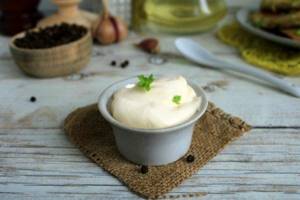
This homemade mayonnaise recipe contains no eggs, milk or other animal products at all!
You will need:
80 ml soy milk, 160 ml oil, 1 tbsp.
lemon juice, 0.5 tsp. mustard, salt and sugar. Preparation:
Warm the soy milk to room temperature, add the butter and blend for a minute with a blender at maximum speed. Add the remaining ingredients and blend for a couple more minutes, without moving the blender if possible.
Homemade Provencal mayonnaise - step-by-step recipe
This is a classic recipe because it is made with mustard. It turns out as tasty and real as in childhood. My mother and I often experimented with recipes that were published in newspapers and cookbooks. We found this sauce in one newspaper and it turned out just perfect!

Ingredients
- egg - 1 pc.
- refined oil - 150-200 ml.
- mustard - 0.5 tsp.
- salt to taste.
- sugar - 0.5 tsp.
- lemon juice or vinegar if desired.
Cooking steps:
1. Beat one egg into the blender bowl, making sure that the yolk remains intact.
Since eggs are not heat-treated, it is better to use homemade eggs.
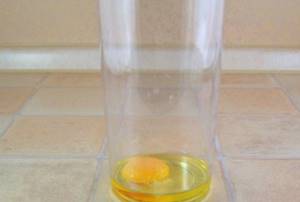
2.Add the remaining ingredients to the egg. All components are added immediately; if desired, you can add more salt or mustard after whipping.
3. Immerse the blender in the bowl, set the power to the highest setting and blend for 10 seconds without lifting it off.
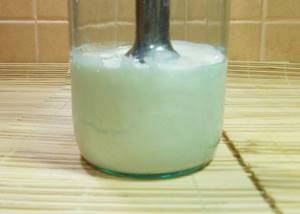
4. After a few seconds, the egg will begin to mix with the oil and mayonnaise will be obtained.
5. Continue blending the contents for 1-2 minutes, moving the blender up and down. Check the sauce for taste and add any missing ingredients if desired. Stir.
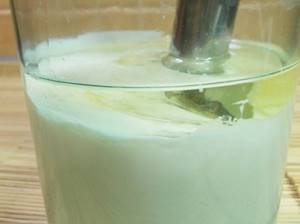
6. Mayonnaise is ready. As you can see, it took a few minutes to cook.
Useful tips
Although all the recipes are very similar to each other, there are a few tricks and secrets that will help you get the most out of homemade mayonnaise. Let's share tips!
1. Remove the ingredients from the refrigerator in advance so that they are at room temperature; 2. If you want to make a beautiful yellow mayonnaise with a bright color, in the best traditions of your grandmother’s recipes, use homemade eggs; 3. To avoid bitterness, mix olive oil with vegetable oil 1:1 – 1:3. Add a little sesame, corn, grape, rapeseed, linseed and other oils; 4. If homemade mayonnaise does not thicken, then add a little more oil. And if you need to make it more liquid - drops of water; 5. Experiment with spices - pepper, dry onions and garlic, paprika, curry, turmeric, herbs; 6. Store homemade mayonnaise in an opaque and hermetically sealed container. This way it will stay in the refrigerator for up to 5 days. On average, it is recommended to store it for 3 days; 7. It is more convenient to work with a blender and you can use whole eggs at once; 8. When preparing with a mixer, we recommend using only yolks, but the mayonnaise will be thicker; 9. Mild but rich Dijon mustard is best for homemade mayonnaise; 10. Vegans can experiment with nut milks and chickpea water. They always need to be heated a little, otherwise the mixture simply won’t fluff; 11. Homemade mayonnaise with tomato paste goes well with fish, and with gherkins or horseradish with meat. For salads, add greens, and for savory appetizers, add applesauce or orange juice; 12. Prepare mayonnaise half an hour before use so that it has time to brew a little. Preparing the sauce takes on average no more than 10 minutes; 13. For storage, it is better to use a glass container rather than metal or plastic; 14. Do not use unrefined oil, because the mayonnaise will separate; 15. To reduce calorie content, mix mayonnaise with natural yogurt before use.
How to determine the quality of Mayonnaise
Mayonnaise is used for making sandwiches, salad dressings and for other purposes. This sauce is popular in Russia as it helps improve the taste of dishes. Therefore, the question of how to choose mayonnaise is relevant for many Russians.
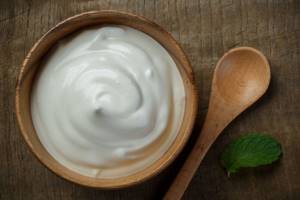
Types of mayonnaise
In stores you can find mayonnaise of different fat content and calorie content. In Russia they are classified into three different types.
- High-calorie with a fat content of 55% and above.
- Medium calorie with fat content 40-55%.
- Low-calorie with fat content up to 40%.
The low-calorie product comes at a more affordable price, but it contains more thickeners and other additives to ensure a smooth, thick consistency. A more natural product is mayonnaise with a high calorie content.
Composition of mayonnaise
The composition of this product is described in detail in GOST 31761-2012, where all possible ingredients are discussed. The main thing is that mayonnaise contains egg products (at least 1%) and vegetable oil (refined and deodorized). Without these ingredients, it will already be a mayonnaise product, which has different requirements.
To prepare mayonnaise, sunflower, corn, rapeseed, soybean, mustard and other types of vegetable oils are used. This is not important, since the taste of the oil is depersonalized; it can only appear during long-term storage, giving the sauce a specific flavor.
What should high-quality mayonnaise be like?
Having decided which mayonnaise to choose, it is important to be able to evaluate the quality of the product.
- A high-quality sauce has a uniform consistency comparable to sour cream. If mayonnaise is too thick, it has a high starch content. Liquid consistency indicates excess water.
- There should be no liquid or grains on the surface. There is no room for lumps in the entire volume and the presence of a few air bubbles is allowed. The presence of bubbles and grains, as well as a jelly-like consistency, are signs of a spoiled product. If there are lumps in the mayonnaise, errors were made in the preparation technology.
- The separation of the sauce is a direct indication of its unsuitability for consumption.
- The color of mayonnaise should be uniformly white, a creamy-yellowish tint is allowed. If a product has a bright, rich yellow color, it contains a lot of dyes.
What to look for when choosing?
- The date of manufacture is an important selection criterion, since fresh mayonnaise has a richer taste and less pungent odor.
- The presence of preservatives in the composition is acceptable, since without them the sauce will spoil within a few days. But their quantity should be minimal, and accordingly the shelf life will be short.
- Mayonnaise may contain stabilizers and thickeners. It is important that these are natural ingredients, like xanthan gum, for example.
- The packaging must not show any signs of damage.
- It is better to choose mayonnaise in a glass container, which allows you to evaluate the appearance of the sauce.
- Mayonnaise should only be purchased in stores where it is stored in refrigerators. At room temperature, the sauce will spoil quickly.
Carefully study the composition of mayonnaise, which should be indicated on the packaging. If it contains egg powder, flavorings and emulsifiers, modified starch and various E-additives, these are signs of a low-quality sauce.
There are various marketing strategies that help manufacturers attract attention to their products. For example, the package says “olive mayonnaise,” although this sauce is made from cheaper vegetable oil (sunflower or other). Olive oil is added to the composition in small volumes so that the word “olive” can be added to the name. The same situation is with quail egg mayonnaise, which uses 99% chicken eggs.

